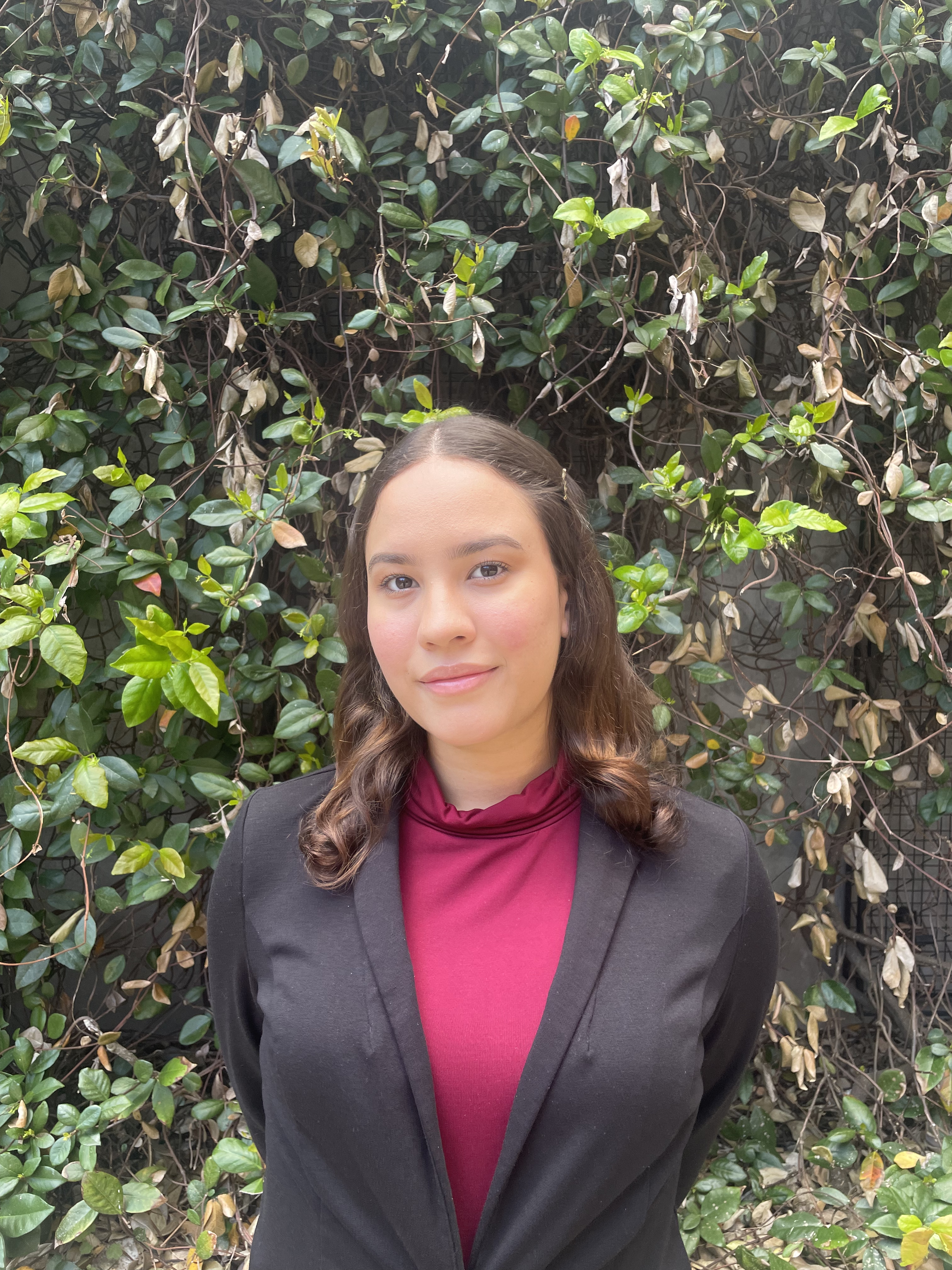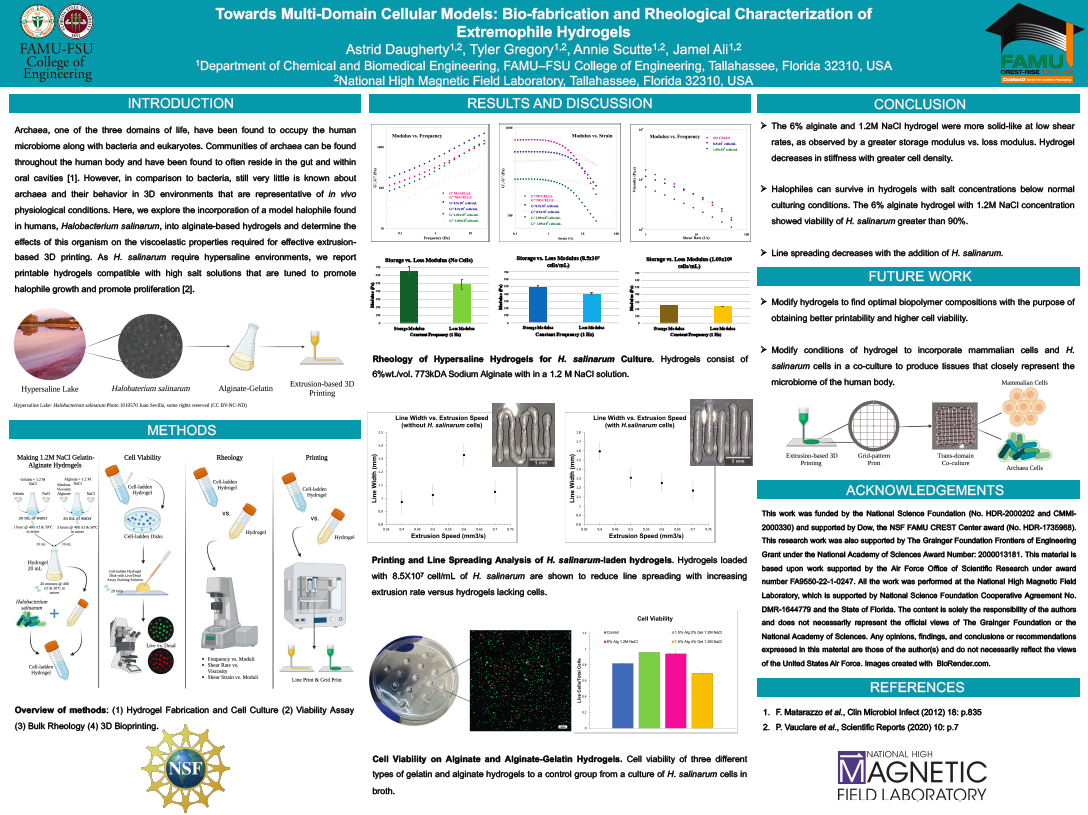Research Symposium
23rd annual Undergraduate Research Symposium, April 6, 2023
Astrid Daugherty Poster Session 2: 1:30 pm - 2:30 pm/ Poster #55

BIO
Hello there! My name is Astrid Daugherty and I am a 3rd year Biomedical Engineering student at FAMU-FSU College of Engineering. I grew up in the Republic of Panama and lived there all my life until I transferred to FSU in the Summer of 2021. I started doing research in the Fall of 2021 as a UROP student, and so I have been involved in research ever since. My current research interests are in the field of biomedical engineering, more specifically, in tissue engineering. My goal after graduation is to go to graduate school and continue my engineering career!
Towards Multi-Domain Cellular Models: Bio-fabrication and Rheological Characterization of Extremophile Hydrogels
Authors: Astrid Daugherty, Jamel AliStudent Major: Biomedical Engineering
Mentor: Jamel Ali
Mentor's Department: Chemical and Biomedical Engineering Mentor's College: FAMU-FSU College of Engineering Co-Presenters:
Abstract
Engineered tissues are becoming increasingly important to treat diseases and restore the function of physiological systems. However, current tissue models lack the inclusion of two other domains of life, archaea and bacteria, which can contribute to the accuracy of specific tissue models. Archaea are prokaryotic cells which are known to inhabit the human oral and gut cavities. To develop models that more accurately mimic physiological conditions, it is critical to first understand the behavior of a 3D culture environment with a single domain. In this project, Halobacterium salinarum is incorporated into saline alginate-based hydrogels and printed using an extrusion-based technique to evaluate rheological properties and cell viability within the 3D structured environment. The viscoelastic characteristics of the hydrogel are analyzed using shear rheology. Results show that the cell-laden hydrogel displays shear-thinning behavior. A higher cell density is correlated with a decreased stiffness of the hydrogels. Examination of printability showed that cell-laden hydrogels had lower line spreading than hydrogels with no cells. Finally, a Live/Dead cytotoxicity assay revealed high cell viability (>96%), which is critical for the long-term use of these printed models. This work will aid in the further understanding of archaea in 3D environments and will enable the development of printable materials that incorporate all three domains of life for more clinically relevant tissue models.
Keywords: Tissue engineering, 3D Bio-printing, Biomedical engineering


